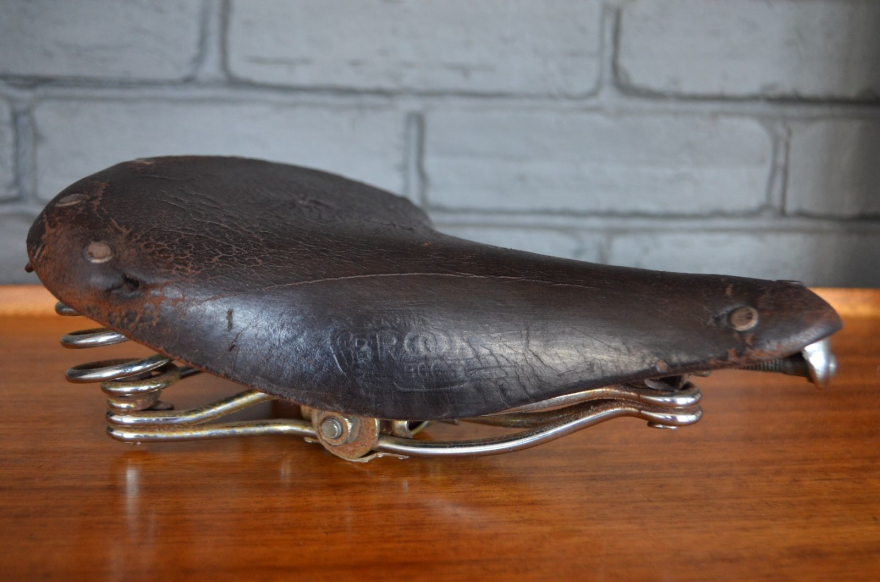Bikes aren’t new. Bike saddles, accordingly, are also not new. The according pains in the ass caused by use of bikes and saddles, unshockingly, are not new. The “Rinsten Spring”—the Kickstarting seat spring claiming to make your bike ride smoother, more comfortable, and healthier? Totally not new. But it is getting freshly stuck in my craw.

Here’s what people want: bikes that don’t hurt their asses. How do you accomplish that? By buying a one-size-fits-all cushy, springy, minimalist, or “ergonomic” product? Of goddamn course not, and anyone who claims otherwise is an asshole and a pain in the ass of any mechanic who has to clean up after their hollow promises.
Listen beautiful relax classics on our Youtube channel.
Rider comfort is a nearly occult blend of personal fitness, bike size and fit, adjustment, parts choice, and where/how you ride. It shifts with sensitivity, season, callousing, and whether your LBS likes you enough to mention that your saddle is trying to give you colon cancer.


It is not likely to be fixed by a single springy steel rail that offers little or no option for pitch adjustment and cuts dramatically into height adjustment. With that in mind, here are just three of the Rinsten’s shock design predecessors (also designed by engineers) and some of their notable features.
 Vintage Softride triathalon setup
Vintage Softride triathalon setupThe Soft Ride Suspension System
These sporty yet ungainly carbon fiber logs were smacked onto bikes from 1989 through the early ’00s. The premise was that removing the seat pillar would allow vertical shock absorption (like the Rinsten), while lateral stiffness would maintain efficient forward thrust. Degrees of stiffness were offered, but user experience varied dramatically by weight and height. Bike fit specialists and physical therapists I’ve worked with still disagree on the ideal amount of hip movement while riding, but the shared tone cautions against too much.
The outcomes of vertically flexible posts: weight-related material fatigue, poor adjustment options for riders outside “average” height/weight range, and vertical movement so dramatic it destabilized correct healthy bike fit. In other words: less butt impact, but more upkeep and less ergonomic body position. Hm.
 Vintage Softride MTB setup
Vintage Softride MTB setupThudbuster Seatposts
 Cane Creek Thudbuster
Cane Creek ThudbusterA shock-absorbing seat post with readily available contemporary sizing, a polymer damper and a parallelogram shock. One of literally hundreds of types of sprung seatposts, these are decades old and work to soften upward blows without displacing riders too much vertically. The original is still around, and most brands offer quantified ranges of resistance or adjustment for rider weight and terrain type.
Worst case scenario you wear out a pivot and get a new one. Best case scenario you use the hell out of it for years until the polymer gets old and disgusting and you show up at a bike shop before it opens on a Sunday demanding that some poor soul replace your antique Ghost Busters ooze-post while you grumpily text your coffee buddies. Outcomes: you can get suspension posts in any imaginable size, from $15 past $800, without losing saddle adjustment.
Sprung And Cushy Seats
 Vintage Brooks England
Vintage Brooks EnglandThese are the oldest and easily the most direct solution for the sensitive-butted among us. If you’re a fair-weather rider with an upright bike, you’re probably only suffering because you’ve got the wrong seat or you don’t ride enough. If you’re a more serious rider and you’re still in pain, you’ve probably got the wrong seat, possibly the wrong seat plus a bad fit.
Sprung and padded seats have taken out the bumps from rides since before we invented concrete. They’re self contained packages of dampening materials and cushioning springs, and as you might guess, there’s a good reason the springy rails are moored solidly at each end. Their only real downsides are retro styling and weight, but they make lightweight ones for the weenies these days. How did we solve that? By updating the materials, not adding parts to the ecosystem in order to “minimize,” and certainly not by reverse engineering a century old system to make it less stable. When chosen carefully for your riding type and butt shape, the outcomes with sprung seats are generally pretty great. The MORGAW seat system is a thoughtful racy take on integrated seat suspension, classics like Brooks and Selle Anatomica now make slimmer and less chromed options, and cushy gel seats are ubiquitous at any commuter friendly bike shop.
 Contemporary Selle Anatomica
Contemporary Selle AnatomicaThe Rinston’s designer, an engineer, seems to have suffered the common plight of uncomfortable butt feelings after being off the bike for a decade. Rather than do what we all must do (tough it out through trial and error), he designed a new solution that works in small scale personally replicated testing. Awesome. Hope he’s ready to make good on the lifetime guarantee.
 Vintage woven seat, used on Pedersen frames
Vintage woven seat, used on Pedersen framesThe Rinsten gets 2/10 for being lightweight and affordable. Negative eight for dubious claims, dubious R+D, and solving a problem that already has thousands of clearer and more user-friendly solutions.
Here’s my certified mechanic’s DIY design hack for aches after riding over potholes: Swerve and take your butt off the seat next time. You’re welcome.
Source: core77